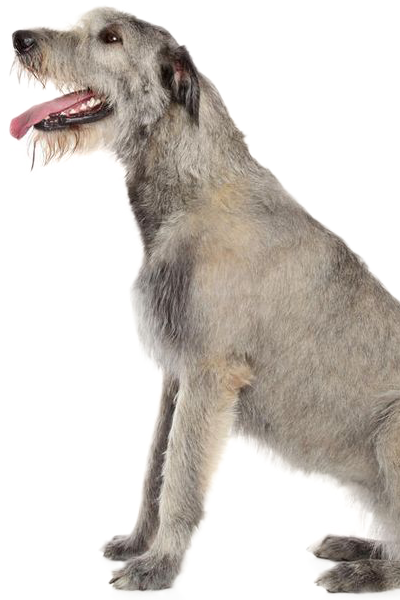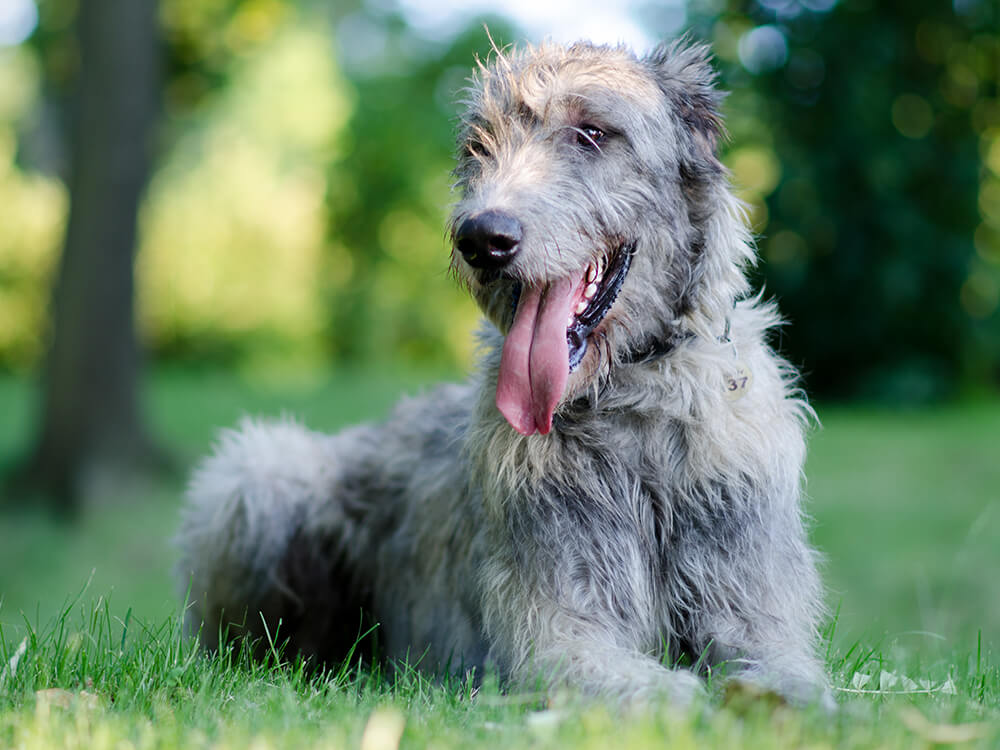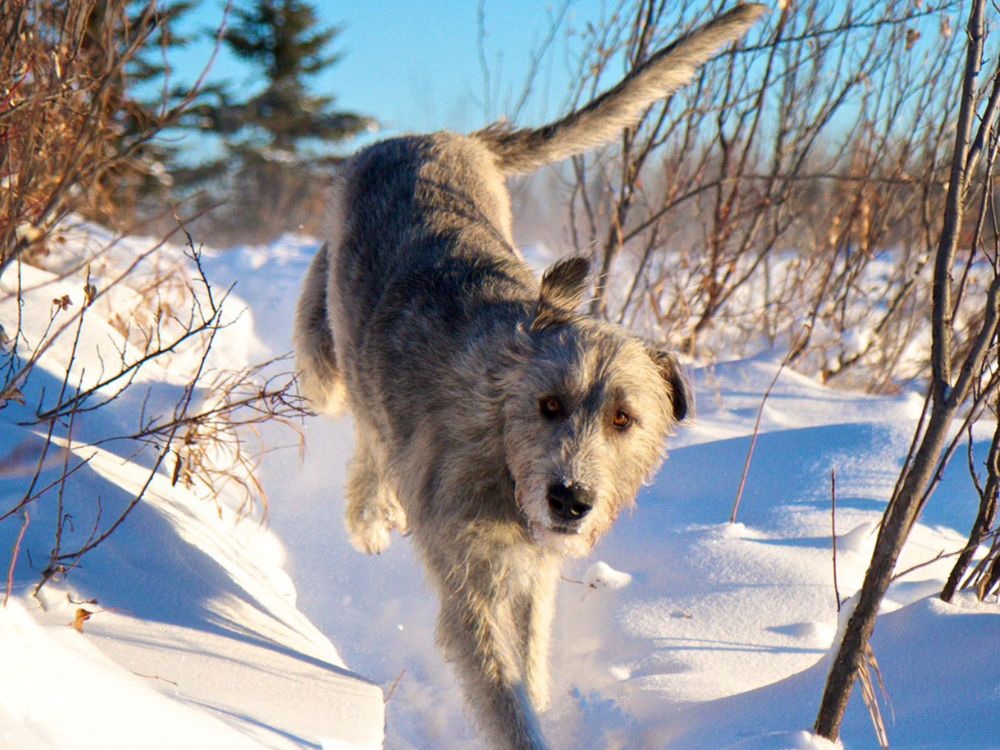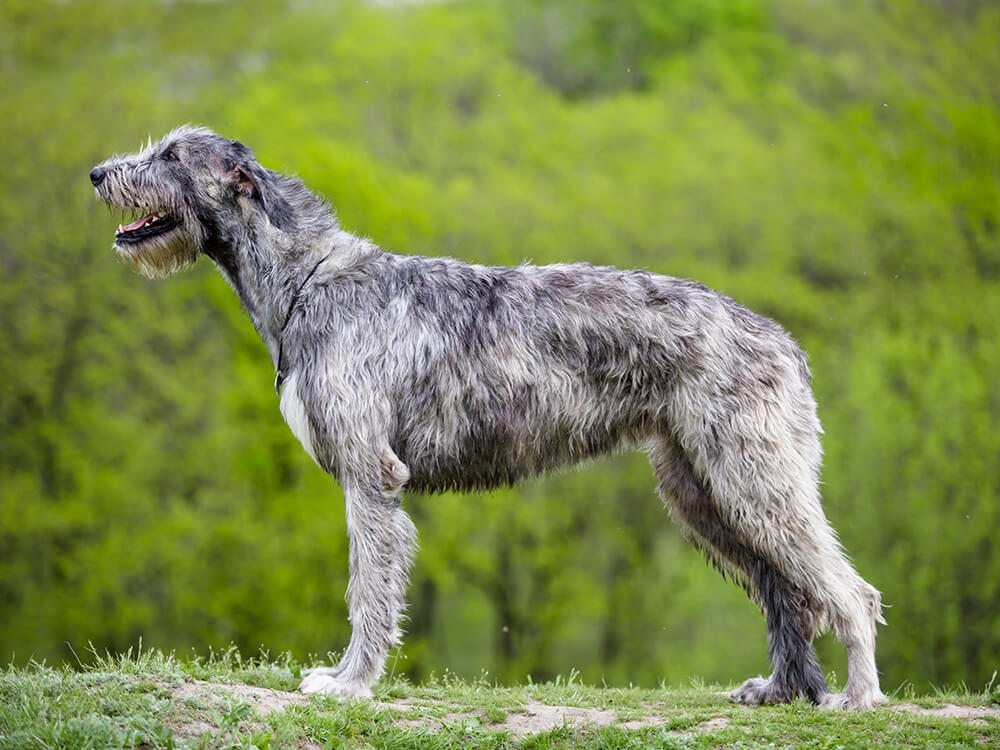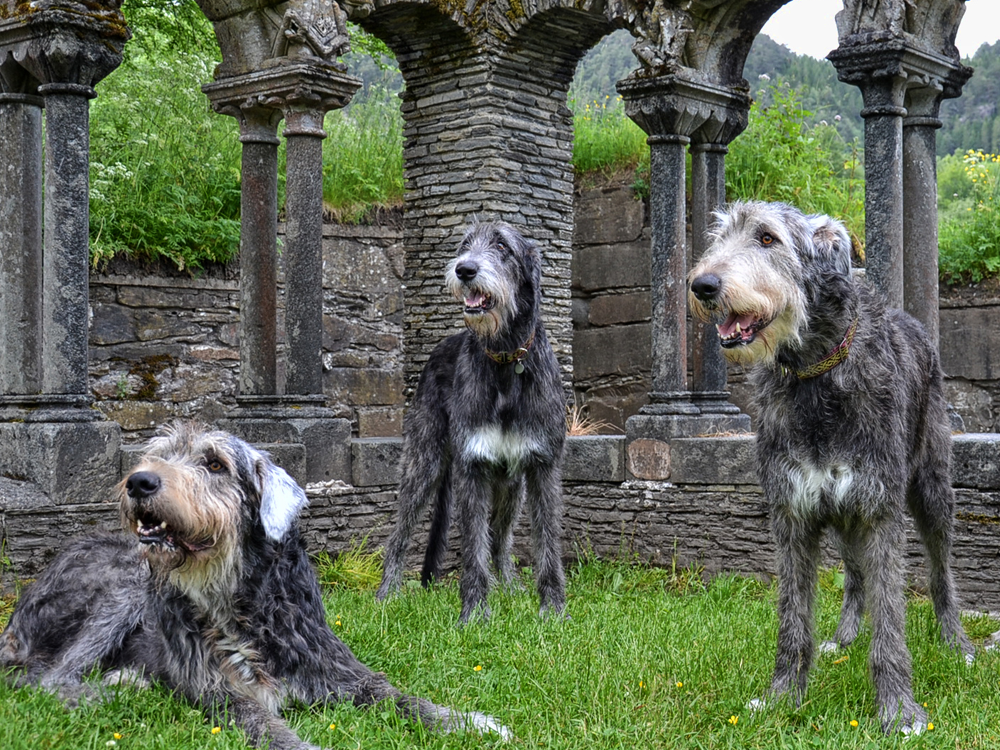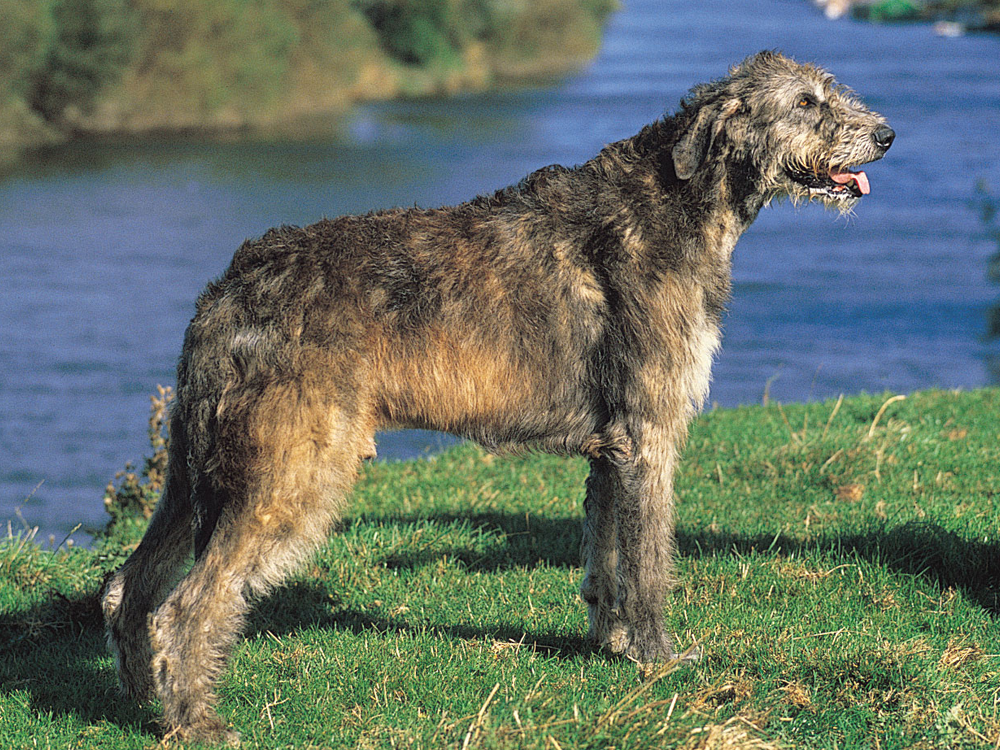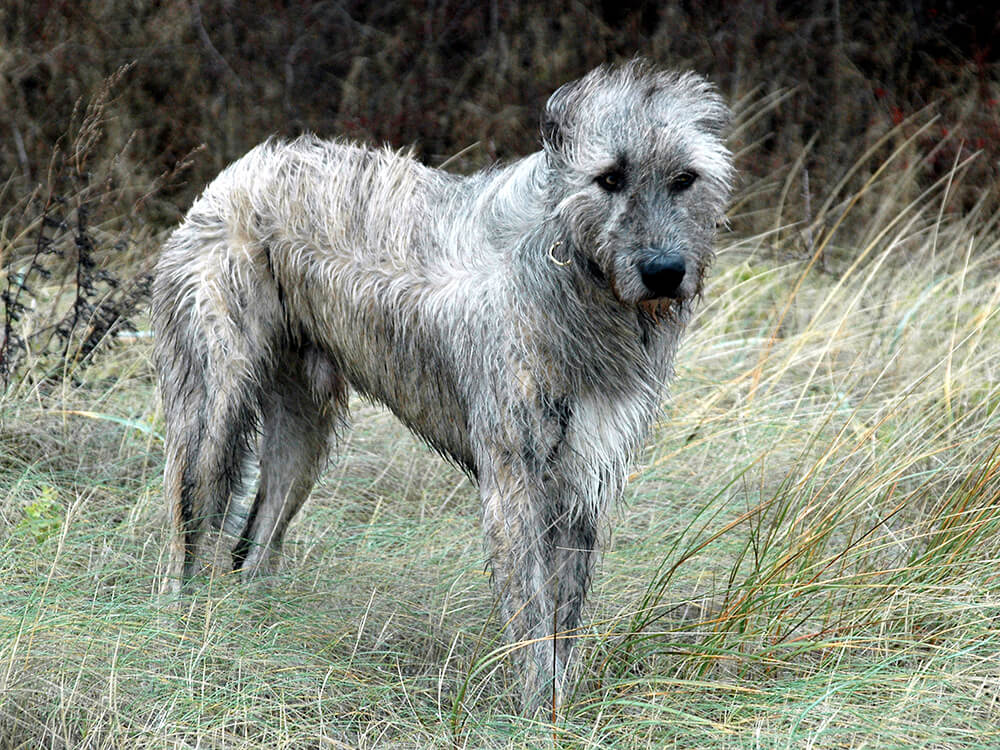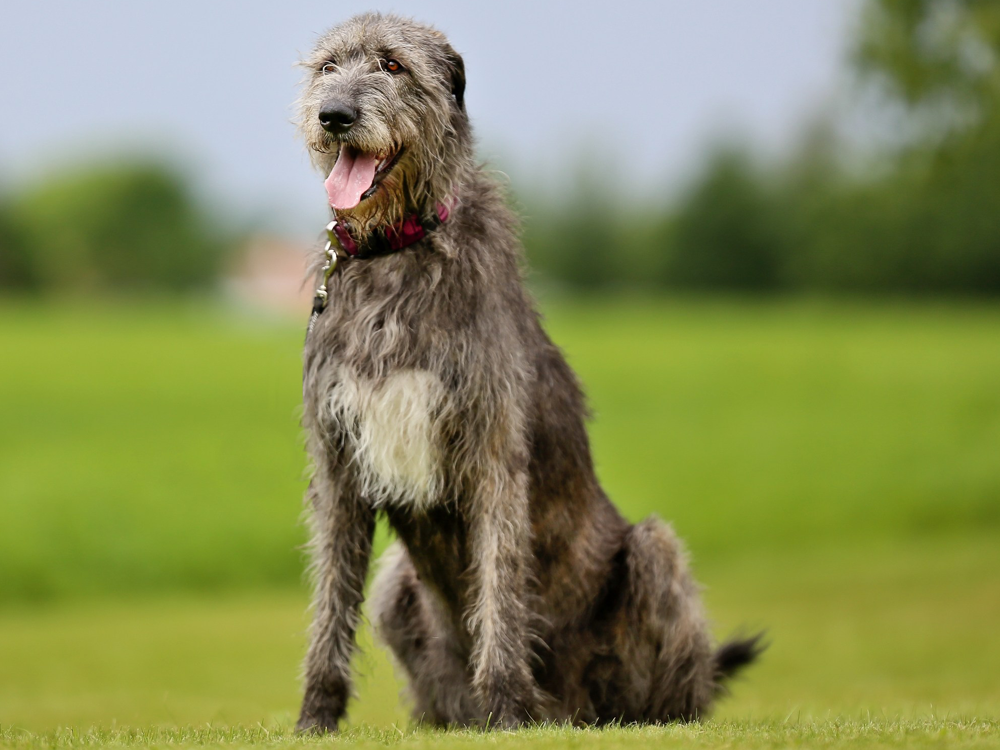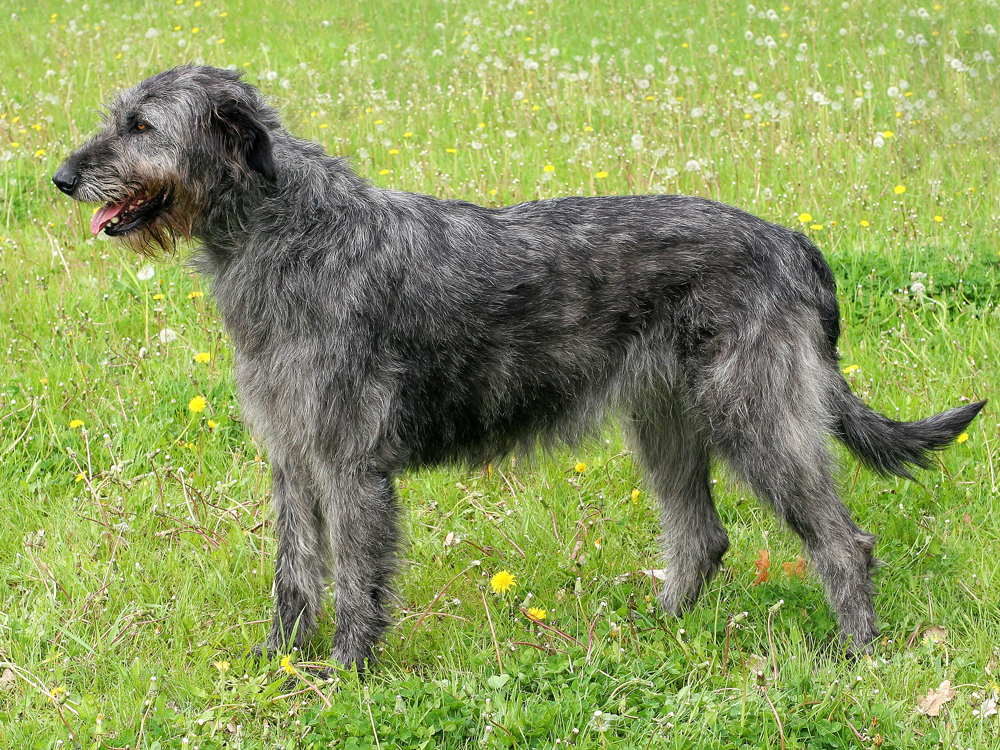
Irish Wolfhound Breed Pictures
Vital Breed Stats
| Height: | 85 - 90 cm M | 75 - 80 cm F |
| Weight: | 41 - 54 kg M | 48 - 68 kg F |
| Breed Group: | Toy Dog Group |
| Life Expectancy: | 7 - 10 years |
| KC Registered: | No |
Breed Characteristics
| Size: |  |
| Grooming: |  |
| Exercise Level: |  |
| Trainability: |  |
| Barking Level: |  |
| Good with Children: |  |
| Good with other pets: |  |
| Affectionate: |  |
| Protective: |  |
| Cost to Keep: |  |
Give a thumbs up if you love the Irish Wolfhound

0
More About the Breed
History
The origins of the Irish Wolfhound is unclear, but most experts claim that the breed descended from Middle Eastern sighthounds that were brought by Phoenician sea-traders to the British Isles around 3,000 years ago. Some speculate that they were crossed with local mastiffs to develop what appeared like a giant Greyhound, and later mixed with either the Irish Sheepdog or the Scottish Deerhound.
Regardless of its actual ancestry, the Irish Wolfhound was known to exist as far back as 391 AD as Ireland's gift to rulers and influential people. Over the centuries, Irish Wolfhounds were highly-prized for their hunting abilities, working in packs to pursue wolves and giant Irish elks. In the 18th century, the breed was out of work when last of the wolves and elks in Ireland were hunted to extinction. This took a toll on the Irish Wolfhound’s numbers, and it too almost went extinct especially during the Great Irish Famine.
In 1862, the Irish Wolfhound breed was saved by Captain George Augustus Graham, a Scotsman in the British army, who made it his life's work to revive and further develop the breed. He also crossed the Irish Wolfhound with the Russian Wolfhound, Great Dane, Pyrenean Mountain Dog and Tibetan Mastiff. The Kennel Club first recognised the Irish Wolfhound in 1925, and today the breed is known to be a gentle and excellent companion.
Appearance
The Irish Wolfhound is massive hound dog that weighs 115 to 180 pounds. Similar in appearance to the rough-coated Greyhound, the Irish wolfhound is the tallest sighthound standing at a towering height of 71 to 90 centimetres. It has a graceful and robust build and smooth gait. The Irish Wolfhound has a long head that it carries high and proud giving it a noble look. It boasts of a moderately pointed muzzle and black nose and lips. Its eyes are dark and oval-shaped while its ears are small and rose-shaped despite its massive frame. Irish Wolfhounds have long legs, comparatively narrow body, slightly arched loin, deep chest and moderately small waist. Like most sighthounds, its tail is long and carried low.
The Irish Wolfhound can endure cold and damp weather thanks to its harsh and wiry coat on its body, head and legs but the most distinctive parts are its long eyebrows and a patch of wiry hair under the jaw. The coat varies in colour such as grey, black, brindle, pure white, wheaten, fawn, and steel grey.
Grooming
This large dog sheds year round, but it can be remedied with weekly brushing to keep loose hair under control and maintain its coat. Generally, Irish Wolfhounds are clean dogs and must only be bathed when necessary. Its mane and body hair can be hand stripped to give it a neat show ring look.
Regularly check and clean the ears for signs of wax build up, irritation or infection. Teeth must be brushed on a weekly basis to inhibit tartar build-up and avoid gum disease and bad breath. Make sure to trim nails monthly if it does not wear down naturally outdoors.
Temperament
Irish Wolfhounds are gentle, sensitive and even-tempered. In spite of the fact that they can run at incredible speed when outside, around the house they are decidedly slow. However, beneath the docile exterior is a hunter that loves nothing more than to chase animals. The Irish Wolfhound thrives in human company and does not take on well to be left alone for long periods of time. This dog breed is ideal for households where one family member works from home or usually stays in the house most of the time.
When it comes to protecting the house or the family against thieves or burglars, its large form is enough to deter bad intentions. However, Irish Wolfhounds are peace lovers and do not bark an alarm, which makes them poor watchdogs and guard dogs. Although the Irish Wolfhound has such a fearsome past as a war dog, this dog breed is actually a gentle giant that loves people including children, other dogs and even cats. Care should still be taken when an Irish Wolfhound is around children since its size alone can easily knock over small children when playtime gets a bit rowdy.
Intelligence
Nutrition
- Senior and less active: up to 2,530 calories daily
- Typical adults: up to 2,850 calories daily
- Physically active/working dogs: up to 3,160 calories daily
Feeding
Health
Exercise
Cost of Ownership
When you buy a large dog, there are a lot of things to consider such as the space, the amount of exercise required and the financial responsibility with feeding and making sure it is healthy and happy. The latter is often overlooked when people start looking for a breeder that often lands dog owners in trouble later on. If you don't want to face certain financial difficulties in the future, it pays to be aware of how much raising an Irish Wolfhound will cost you.
- You can adopt an Irish Wolfhound puppy to save money, but a well-bred one will cost you around £900 to £1,400.
- Most pet insurance premium is calculated based on several factors but will set you back £70 to £130 a month.
- Food cost can range from £60 to £80 a month for a large breed.
- Regular veterinary check-ups and some basic procedures will cost over £1,400 a year.
Is an Irish Wolfhound Right for You?
- The Irish Wolfhound is gentle, sensitive and even-tempered.
- It does not bark an alarm, thus is a poor watchdog and guard dog.
- It is a gentle giant that loves people including children, other dogs and even cats.
- Irish Wolfhounds have a strong desire for human companionship.
- Irish Wolfhounds are clean dogs and only need a bath when necessary.
- They have a shorter lifespan of 6 to 8 years, compared to other dog breeds.
